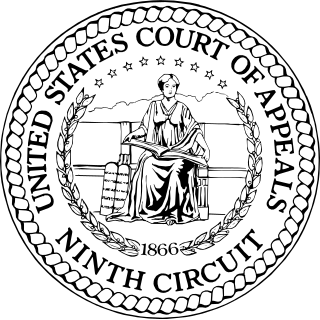 W
WSelf-defense is a countermeasure that involves defending the health and well-being of oneself from harm. The use of the right of self-defense as a legal justification for the use of force in times of danger is available in many jurisdictions.
 W
WBear spray is a specific aerosol bear deterrent, whose active ingredients are capsaicin and related capsaicinoids, that is used to deter aggressive or charging bears.
 W
WThe Black Women's Defense League (BWDL) is a self-defense organization based in Dallas, Texas, United States.
 W
WOn August 9, 2014, Michael Brown Jr., an 18-year-old black man, was fatally shot by 28-year-old white Ferguson police officer Darren Wilson in the city of Ferguson, Missouri, a suburb of St. Louis. Brown was accompanied by his 22-year-old friend Dorian Johnson. Wilson said that an altercation ensued when Brown attacked Wilson in his police vehicle for control of Wilson's gun until it was fired. Johnson said that Wilson initiated a confrontation by grabbing Brown by the neck through his car window, threatening him and then shooting at him. At this point, both Wilson and Johnson state that Brown and Johnson fled, with Wilson pursuing Brown shortly thereafter. Wilson stated that Brown stopped and charged him after a short pursuit. Johnson contradicted this account, stating that Brown turned around with his hands raised after Wilson shot at his back. According to Johnson, Wilson then shot Brown multiple times until Brown fell to the ground. In the entire altercation, Wilson fired a total of twelve bullets, including twice during the struggle in the car; the last was probably the fatal shot. Brown was struck six times, all in the front of his body.
 W
WCommonwealth v. Eberle, 474 Pa. 548, 379 A.2d 90 (1977), is a criminal case involving duty to retreat. The case established that in order to counter the justification or excuse of self defense, the prosecution must show that a defendant who used deadly force had a safe opportunity to escape.
 W
WCourvoisier v. Raymond, 23 Colo. 113 (1896), was a case decided by the Colorado Supreme Court that affirmed the use of a reasonableness standard when determining the validity of a mistaken self-defense.
 W
WDeadly force, also known as lethal force, is use of force that is likely to cause serious bodily injury or death to another person. In most jurisdictions, the use of deadly force is justified only under conditions of extreme necessity as a last resort, when all lesser means have failed or cannot reasonably be employed.
 W
WDefensive gun use (DGU) is the use or presentation of a firearm for self-defense, defense of others or in some cases, protecting property. The frequency of incidents involving DGU, and their effectiveness in providing safety and reducing crime is a controversial issue in gun politics and criminology, chiefly in the United States. Different authors and studies employ different criteria for what constitutes a defensive gun use which leads to controversy in comparing statistical results. Perceptions of defensive gun use are recurring themes in discussions over gun rights, gun control, armed police, open and concealed carry of firearms.
 W
WEveryday carry (EDC) or every-day carry is a collection of useful items that are consistently carried on person every day. The main reasons for having EDC are utility and preparedness; to help individuals overcome simple everyday problems, and to prepare someone for unexpected and possibly dangerous situations. Some of the most common EDC items are knives, flashlights, multitools, wallets, smartphones, watches, key rings, notebooks, firearms and pens.
 W
WFront Sight Firearms Training Institute, also known as Front Sight and as Front Sight Resorts, was founded in 1996 by Dr Ignatius Piazza. It is a privately owned and operated organization whose purpose is twofold: 1) to provide training, mostly on how to safely operate firearms in self-defense settings, also referred to as providing "comfort of skill at arms", and 2) an activism goal to "positively change the image of gun ownership in our lifetimes" by repudiating unfavorable views of gun owners put forth by various private gun control, and political, organizations. It claims to have grown to be the largest gun training organization in the US, and larger than all the others combined.
 W
WHome Alive is a Seattle-based anti-violence organization that offers self-defense classes on a sliding scale payment system. Home Alive once operated as a non-profit organization and now continues to operate as a volunteer collective. Home Alive sees its work as integrated into larger social justice movements, recognizing how violence is often perpetuated through oppression and abuse. Home Alive classes included basic physical self-defense, boundary setting, and advanced multi-week courses.
 W
WNellie May Madison was an American woman who was convicted of murder in 1934 for killing her husband. She was the first woman to be sentenced to death in the state of California. Due to public outcry, her sentence was later commuted to life in prison and she was eventually released.
 W
WIn the United States, open carry refers to the practice of openly carrying a firearm in public, as distinguished from concealed carry, where firearms cannot be seen by the casual observer. To "carry" in this context indicates that the firearm is kept readily accessible on the person, within a holster or attached to a sling. "Carrying" a firearm directly in the hands, particularly in a firing position or combat stance, is also known as "brandishing" and may constitute a serious crime, but that is not the mode of "carrying" discussed in this article.
 W
WPeruta v. San Diego, 824 F.3d 919, was a decision of the United States Court of Appeals for the Ninth Circuit pertaining to the legality of San Diego County's restrictive policy regarding requiring documentation of "good cause" that "distinguish[es] the applicant from the mainstream and places the applicant in harm's way" before issuing a concealed carry permit.
 W
WPlummer v. State was an 1893 court case decided by the Indiana Supreme Court. The case overturned a manslaughter conviction, ruling that the convicted defendant had been protecting himself from the illegal use of force by a police officer. It is widely quoted on the internet, under the false belief that it gives citizens the right to resist an unlawful arrest by force, including deadly force. The full citation is Plummer v. State, 135 Ind. 308, 34 N.E. 968 (1893).
 W
WSelf-defense is a countermeasure that involves defending the health and well-being of oneself from harm. The use of the right of self-defense as a legal justification for the use of force in times of danger is available in many jurisdictions.
 W
WRed Brigade Trust is a non-governmental organization located in Lucknow, Uttar Pradesh, India. It was formed in 2011 by Ajay Patel and Usha Vishwakarma and focuses on empowering women through self-defense education.
 W
WThe Byron David Smith killings occurred on Thanksgiving Day of 2012, when Haile Kifer, 18, and her cousin, Nicholas Brady, 17, broke into the home of Byron David Smith, 64, in Little Falls, Minnesota, in the United States. Smith, armed with a Ruger Mini-14, shot the teens separately and minutes apart as they entered the basement where he was, later stating to police he was worried about them being armed.
 W
WThe use of force, in the context of law enforcement, may be defined as the "amount of effort required by police to compel compliance by an unwilling subject".